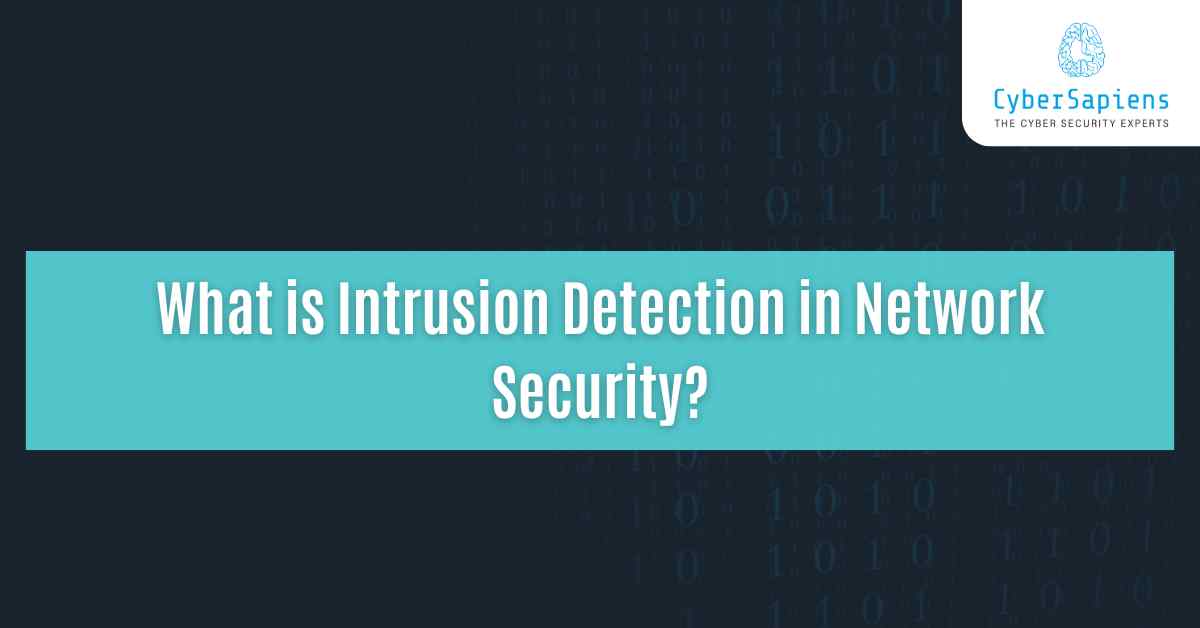In the world of network security, intrusion detection plays a crucial role in protecting sensitive information from unauthorized access.
As technology advances and more data is transmitted over the internet, the risk of cyberattacks and data breaches increases exponentially. In this article, we will delve into the concept of intrusion detection in network security, its importance, and the various techniques used to prevent and detect intrusions.
What is Intrusion Detection?
Intrusion detection is the process of monitoring network traffic for signs of unauthorized access, misuse, or malicious activity. It involves using various techniques to identify and alert potential security threats, which can then be investigated and mitigated. Intrusion detection is an essential component of a comprehensive security strategy, as it helps to detect and respond to security incidents in a timely manner.
Importance of Intrusion Detection in Network Security
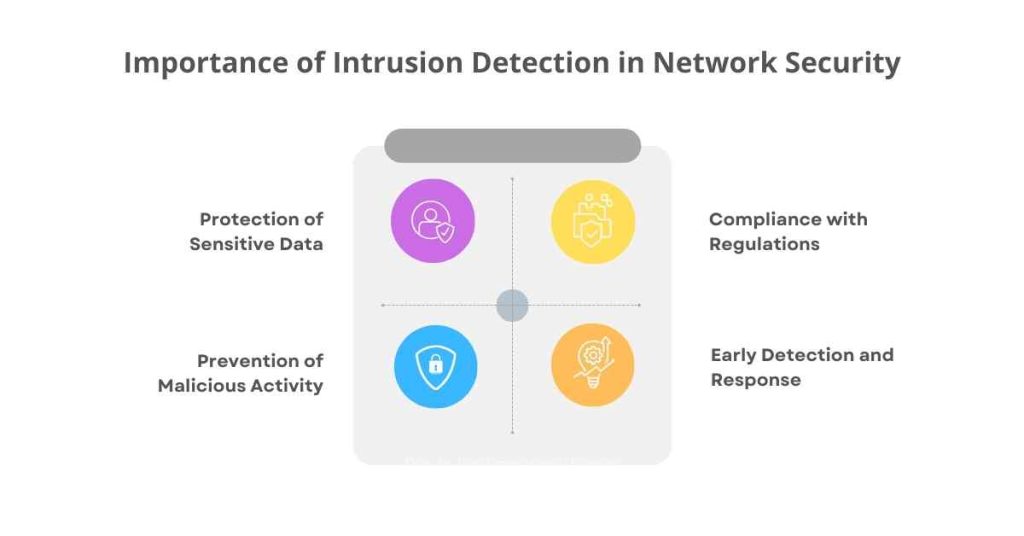
In network security, intrusion detection is critical for protecting sensitive information, such as encryption keys, passwords, and confidential data. Here are some reasons why intrusion detection is essential in network security:
1. Protection of Sensitive Data
Intrusion detection helps to prevent unauthorized access to sensitive data, which can be catastrophic if compromised.
2. Prevention of Malicious Activity
Intrusion detection can detect and prevent malicious activity, such as malware, ransomware, and denial-of-service (DoS) attacks.
3. Compliance with Regulations
Intrusion detection is a regulatory requirement for many industries, such as finance and healthcare, where sensitive data is handled.
4. Early Detection and Response
Intrusion detection enables early detection and response to security incidents, which can help to minimize the impact of a breach.
Types of Intrusion Detection Systems
There are two primary types of intrusion detection systems (IDS): Network-based IDS (NIDS) and Host-based IDS (HIDS).
1. Network-based IDS (NIDS)
NIDS monitor network traffic to detect and alert potential security threats. They are typically installed at network chokepoints, such as routers and firewalls, and analyze network traffic in real time.
2. Host-based IDS (HIDS)
HIDS monitors system calls and network traffic on individual hosts to detect and alert potential security threats. They are typically installed on servers and workstations and analyze system calls and network traffic in real-time.
Techniques Used in Intrusion Detection
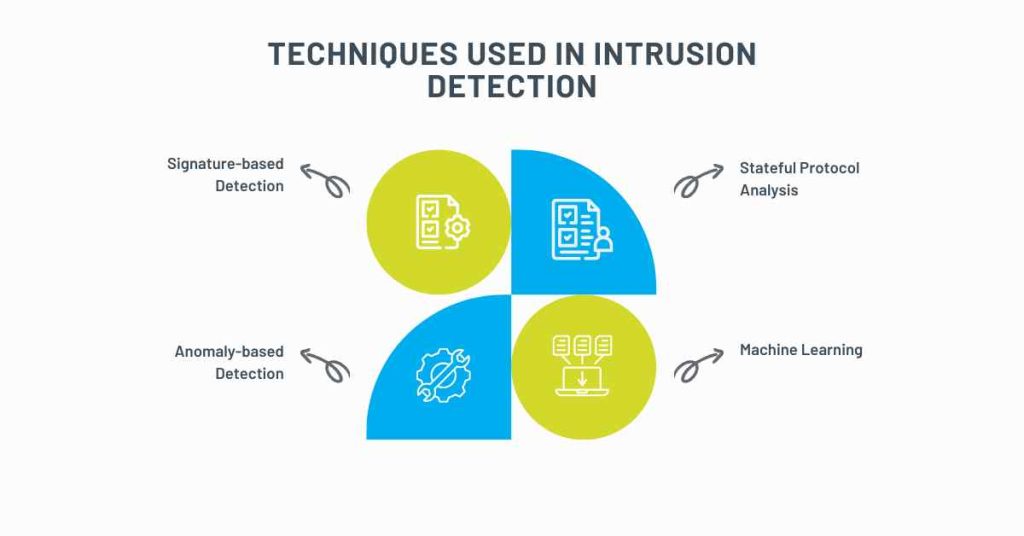
Intrusion detection uses various techniques to detect and alert potential security threats. Some common techniques include:
1. Signature-based Detection
This technique involves matching network traffic or system calls against known signatures of malicious activity.
2. Anomaly-based Detection
This technique involves monitoring network traffic or system calls for unusual patterns of behaviour, which can indicate malicious activity.
3. Stateful Protocol Analysis
This technique involves analyzing network traffic to identify potential security threats based on protocol anomalies.
4. Machine Learning
This technique involves using machine learning algorithms to analyze network traffic and system calls to identify potential security threats.
Challenges of Intrusion Detection in Network Security
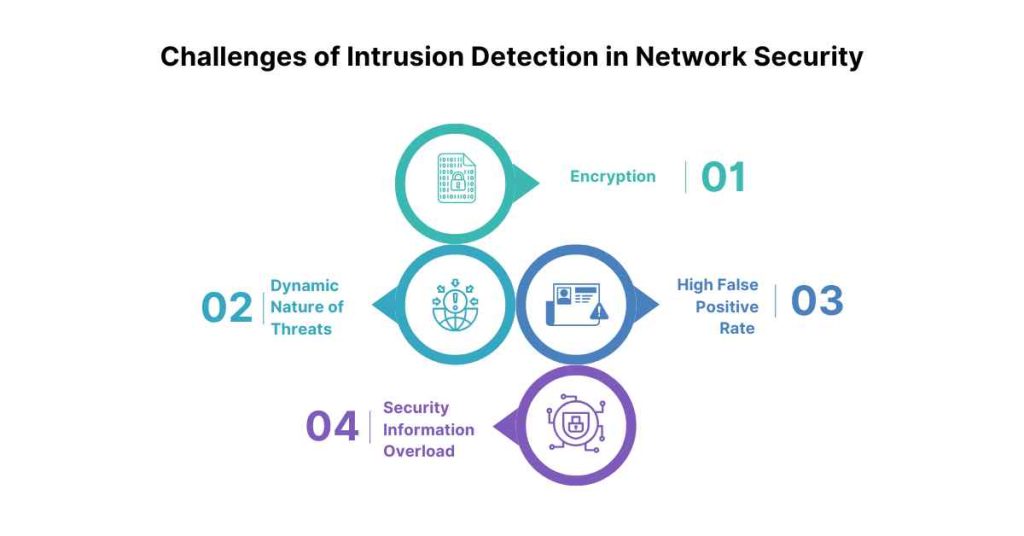
Intrusion detection in Network Security is challenging due to several reasons:
1. Encryption
Encrypted traffic can make it difficult to detect malicious activity, as the contents of the traffic are hidden.
2. Dynamic Nature of Threats
Security threats are constantly evolving, making it difficult to keep signature-based detection systems up-to-date.
3. High False Positive Rate
Intrusion detection systems can generate false positives, which can lead to unnecessary investigations and downtime.
4. Security Information Overload
The sheer volume of security-related data can make it difficult to identify and respond to security incidents on time.
Best 4 Practices for Intrusion Detection in Network Security
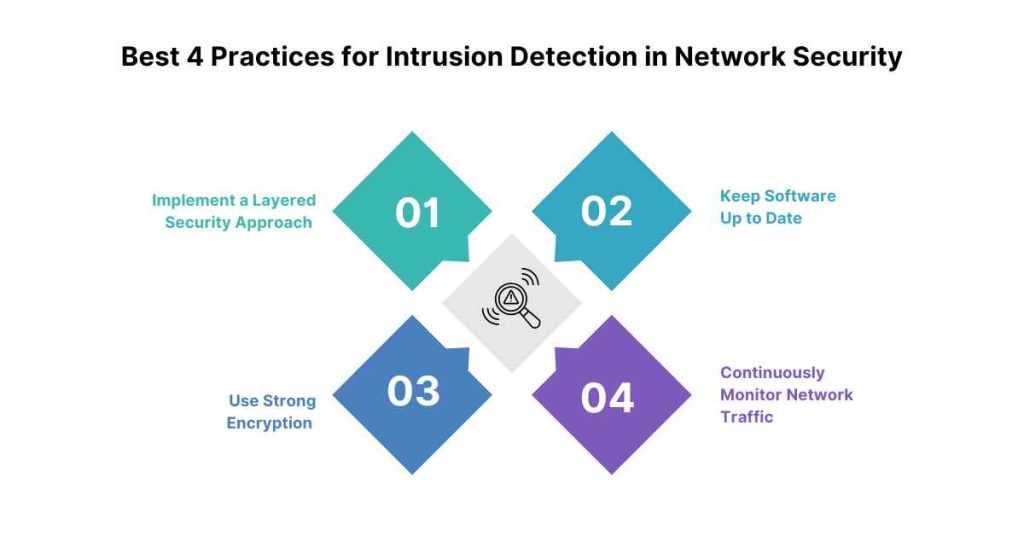
To ensure effective intrusion detection in Network Security, the following best practices should be followed:
1. Implement a Layered Security Approach
Implement a layered security approach that includes multiple security controls, such as firewalls, intrusion detection systems, and encryption.
2. Keep Software Up to Date
Keep software and firmware up-to-date to ensure that known vulnerabilities are patched.
3. Use Strong Encryption
Use strong encryption to protect sensitive data, both in transit and at rest.
4. Continuously Monitor Network Traffic
Continuously monitor network traffic to detect and respond to security incidents on time.
Conclusion
Intrusion detection is a critical component of network security. It involves using various techniques to detect and alert potential security threats, which can then be investigated and mitigated.
While intrusion detection is challenging due to the dynamic nature of threats and the high false positive rate, following best practices and implementing a layered security approach can help to ensure effective intrusion detection.
By protecting sensitive information and preventing malicious activity, intrusion detection helps to ensure the confidentiality, integrity, and availability of data, which is essential in today’s digital world.
FAQs: What is Intrusion Detection in Network Security?
1. What are the different types of intrusion detection systems (IDS)?
Ans: There are two primary types of intrusion detection systems (IDS): Network-based IDS (NIDS) and Host-based IDS (HIDS). NIDS monitor network traffic to detect and alert on potential security threats, while HIDS monitor system calls and network traffic on individual hosts.
2. How does intrusion detection work?
Ans: Intrusion detection works by using various techniques to detect and alert on potential security threats. These techniques include signature-based detection, anomaly-based detection, stateful protocol analysis, and machine learning.
3. What is the difference between signature-based and anomaly-based detection?
Ans: Signature-based detection involves matching network traffic or system calls against known signatures of malicious activity, while anomaly-based detection involves monitoring network traffic or system calls for unusual patterns of behavior that can indicate malicious activity.
4. Can intrusion detection detect encrypted malware?
Ans: Intrusion detection can detect encrypted malware using techniques such as behavioral analysis and machine learning. However, detection may not be possible in all cases, especially if the malware uses advanced encryption techniques.
5. What is the difference between intrusion detection and intrusion prevention?
Ans: Intrusion detection involves detecting and alerting on potential security threats, while intrusion prevention involves blocking or preventing malicious activity.
6. Can intrusion detection be used in cloud environments?
Ans: Yes, intrusion detection can be used in cloud environments to protect cloud-based resources. Cloud-based intrusion detection services are available that can provide scalable and on-demand intrusion detection.


